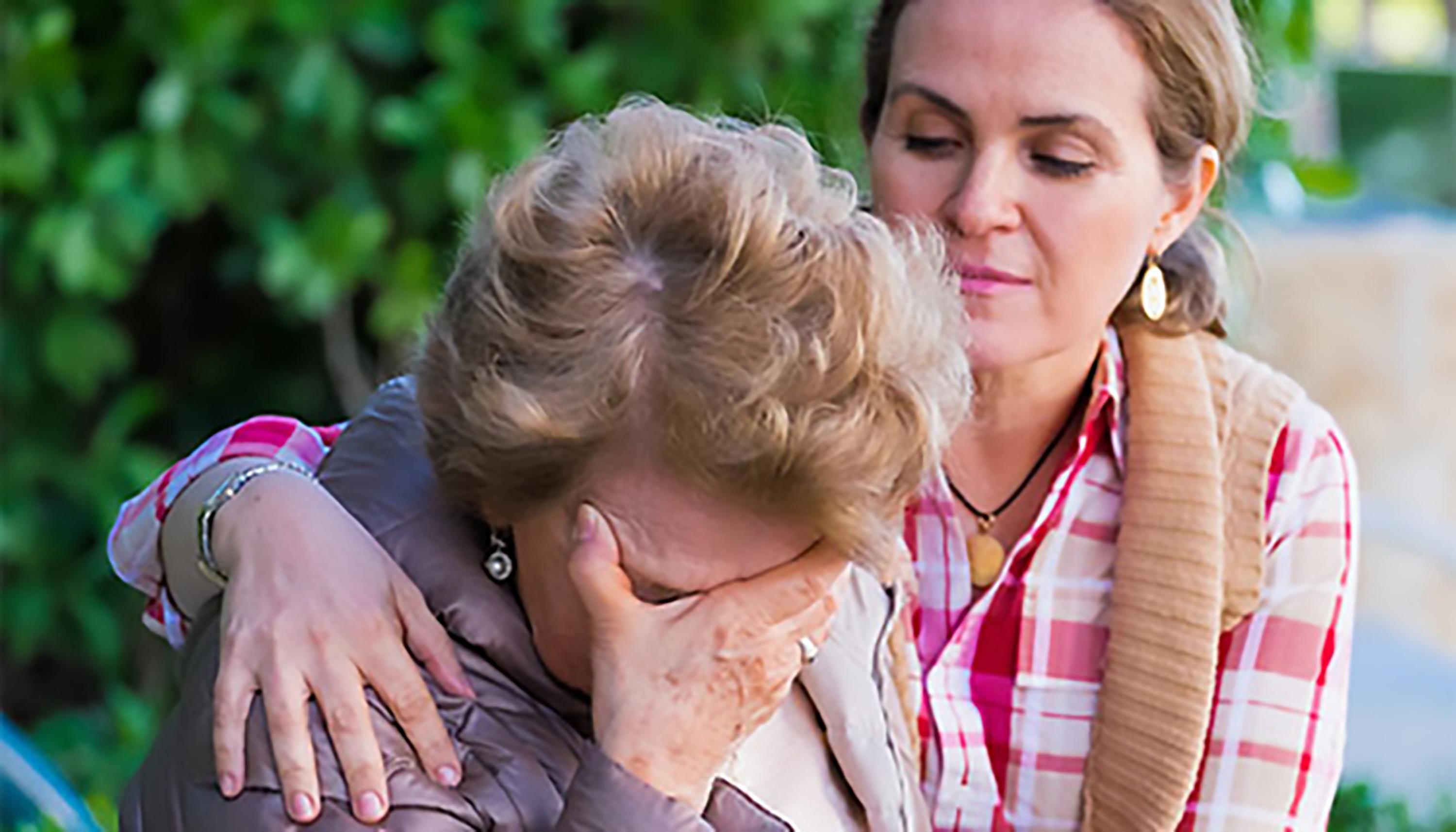



















Tsential part of any doctor's visit. Surprisingly, though, there are no absolutes in a routine physical.
A good doctor may be thor ough or brief, but they will spend time listening to your concerns and providing coun seling for your particular com plaints and risk factors.
ANNUAL EXAMS USUALLY CHECK YOUR:
HISTORY
This is your chance to men tion any complaints or con cerns about your health.

Your doctor will also likely quiz you about lifestyle behaviors like smoking, excessive alco hol use, sexual health, diet, and exercise.
The doctor will also check on your vaccination status and update your personal and family medical history.
These are some vital signs checked by your doctor:
- Blood pressure: Less than 120 over less than 80 is a nor-
The Newspaper O Mensageiro7 is a monthly publication via ONLINE in English, Portuguese, and Spanish.
Reproduction in whole or in part of the context of the publication without proper permission is expressly prohibited.
O Mensageiro7 Newspaper is not responsible for the insertion of photos, logos, slogans, errors or omissions by advertisers or information provided by third parties, edited in any part of this publication.
Articles, messages, interviews, and studies published in this Newspaper, by each author, do not necessarily reflect the opinion of the Editor.
Each writer is responsible for their own content.
Therefore, each author is available to answer the reader's questions.

mal blood pressure.
Doctors define high blood pressure (hypertension) as 130 over 80 or higher.
- Heart rate: Values between 60 and 100 are considered normal.
Many healthy people have heart rates slower than 60, however.
- Respiration rate: From 12 to 16 breaths per minute is normal for a healthy adult. Breathing more than 20 times per minute can suggest heart or lung problems.
- Temperature: 98.6 degrees Fahrenheit is the average, but healthy people can have resting temperatures slightly higher or lower.
Your doctor gathers a large amount of information about you and your health just by watching and talking to you.
How is your memory and mental quickness? Does your skin appear healthy? Can you easily stand and walk?
Your doctor can use a range of examination techniques including tapping your abdomen to detect liver size and presence of abdominal fluid.
Listening to your heart with a stethoscope, a doctor might detect an irregular heartbeat, a heart murmur, or other clues to heart disease.
LUNG EXAM
Using a stethoscope, a doctor listens for crackles, wheezes, or decreased breath sounds.
These and other sounds are clues to the presence of heart or lung disease.
Head and Neck Exam. Opening up and saying "ah" shows off your throat and tonsils.
The quality of your teeth and gums also provides in-
formation about your overall health. Ears, nose, sinuses, eyes, lymph nodes, thyroid, and carotid arteries may also be examined.
ABDOMINAL EXAM
Your doctor can use a range of examination techniques including tapping your abdomen to detect liver size and presence of abdominal fluid, listening for bowel sounds with a stethoscope, and palpating for tenderness.
NEUROLOGICAL EXAM
Nerves, muscle strength, reflexes, balance, and mental state may be assessed.
DERMATOLOGICAL EXAM
Skin and nail findings could indicate a dermatological problem or disease somewhere else in the body.
Your doctor will look for physical and sensory changes. Pulses can be checked in your arms and legs.
Examining joints can assess for abnormalities.
An annual physical exam for men might also include:
TESTICULAR EXAM
A doctor can check each testicle for lumps, tenderness, or

Your doctor will also likely quiz you about lifestyle behaviors like smoking, excessive alcohol use, sexual health, diet, and exercise.
changes in size.
Most men with testicular cancer notice a growth before seeing a doctor.
HERNIA EXAM
The famous "turn your head and cough" checks for a weakness in the abdominal wall between the intestines and scrotum.
PENIS EXAM
A doctor might notice evidence of sexually transmitted
infections such as warts or ulcers on the penis.
Prostate exam: Inserting a finger in the rectum lets a doctor feel the prostate for its size and any suspicious areas.
A woman's annual exam might include:
BREAST EXAM
Feeling for abnormal lumps may detect breast cancer or benign breast conditions.
The doctor will also check the lymph nodes in the underarm area and look for visual abnormalities of the breasts and nipples.
PELVIC EXAM
The pelvic exam allows examination of the vulva, vagina, cervix, uterus and ovaries.
Routine checks for sexually transmitted infections are often done.
A Pap test and HPV test can screen for cervical cancer and help assess risk. ◙
SOURCE: WEBMD.COM


Family of more than 3,000 species of sound-producing insects.
Cicadas are found in tropical and temperate areas world wide and occur in deserts, grasslands, and forests.
Cicadas have long been used in folk medicines, as religious and monetary symbols, and as an important source of food for humans and many other organisms.
The cicada appears in the my thology, literature, and music of many cultures, including those of some Indigenous peoples in the Americas, and the males of certain Asian species have even been kept in cages for their melodious songs.


The wing veins shown (with their abbreviations in parentheses) are cubitus (Cu), me-
Cicadas are found in tropical and temperate areas worldwide and occur in deserts, grasslands, and forests.
dia (M), medial (m), radius (R), radial sector (Rs), anal (An), mediocubital (m-cu), costa (C), and subcosta (Sc).
Cicadas are medium to large insects, ranging in size from 2 to 5 cm (0.8 to 2 inches).
They characteristically have short antennae, two pairs of transparent membranous wings, prominent compound eyes, and three simple eyes (ocelli) that form a triangle between the compound eyes.
The insects do not bite or
Major species are generally easily recognized by differences in songs, behavior, and morphology.
The shrill thorntree cicada (Brevisana brevis), found in Africa, is thought to be the loudest insect in the world.
Exceeding 106 decibels, the males’ songs are nearly as loud as a chainsaw (110 deci-

bels).
Male cicadas produce loud noises by vibrating membranes (tymbals) near the base of the abdomen.
Males of each species typically have three distinct sound responses:
A congregational song that is regulated by daily weather fluctuations and by songs produced by other males;
A courtship song, usually produced prior to copulation;
A disturbance squawk, produced by individuals captured, held, or disturbed into flight.
Most North American cicadas produce rhythmical ticks, buzzes, whines, or screams, although in some species the song is musical. Females lack tymbals, though some species use their wings to produce clicking or snapping sounds, often in response to the songs of the males.
All cicada species have a life cycle that consists of three stages: egg, nymph, and adult.
Adult female cicadas usually lay their eggs in woody plant tissues.
Newly hatched nymphs burrow into the ground where they suck juices from roots of perennial plants.
Nymphs usually undergo five molts during the year or more required to reach maturity.
When prompted to emerge— the biology of which is not well understood for long-lived species—mature nymphs often appear aboveground en masse and undergo their final molt on nearby trees.
The winged adults live for only a few weeks, just long enough to find a mate and lay eggs.
Although not ordinarily considered a pest, the females, if numerous, may damage young saplings during their egg laying.
A large and diverse group, the cicada family comprises more than 500 genera worldwide.
The periodical cicadas (Magicicada) are among the most fascinating and best-
All cicada species have a life cycle that consists of three stages: egg, nymph, and adult.
The genus contains seven North American species of 17-year cicadas (often erroneously called 17-year locusts) and13-year cicadas.
In what are among the longest life cycles of any insects, periodical cicadas emerge in spring only every 13 or 17 years, with millions of insects materializing from the soil in a matter of weeks and dying shortly thereafter.
These species occur in chronologically and geographically isolated broods.
A dog-day, or green, cicada (Neotibicen canicularis) emerging from a molt.
To distinguish them from the periodical cicadas, a number of North American species are known as annual cicadas.
These are seen every summer, though their life cycles typically span 2–5 years.
Annual cicadas include the dog-day cicadas (genus Neotibicen), scrub cicadas (genus Diceroprocta), several species of the genus Neocicada, and members of the genus Okanagana.
The nearly 60 species of the genus Cicada are found in Europe, the Middle East, and parts of Africa.
The common, or ash, cicada (Cicada orni) is one of the most familiar species in Europe. The New Forest cicada (Cicadetta montana) is the only cicada native to the United Kingdom, where it is considered an endangered species.
The largest cicadas in the world are found in Asia.
Members of the genus Megapomponia are large-bodied insects native to Southeast Asia.
Included is the empress cicada (Megapomponia imperatoria), the most massive of all known cicada species, with a superlative body length of about 7 cm (2.8 inches).
The only member of its genus, Tacua speciosa can reach more than 5.5 cm (2 inches) in length.
The insect is unusual in that its wings are opaque instead of transparent like those of other cicada species. ◙
SOURCE: WWW.PESTWORLD.COM
CONTINUING FROM PAGE 6
Clots can form either in the brain's blood vessels, in blood vessels leading to the brain, or even blood vessels elsewhere in the body that travel to the brain.
These clots block blood flow to the brain's cells, choking off oxygen to a part of the brain. Without oxygen, brain cells first go into shock and then start dying.
So the longer you go without stroke treatment, the greater the damage to your brain. Ischemic strokes can also happen when too much plaque (fatty deposits and cholesterol) clogs the brain's blood vessels.
These are the most com mon type of stroke. About 80% of strokes are isch emic.
• HEMORRHAGIC STROKES happen when a blood ves sel in the brain breaks or ruptures.
The result is blood seep ing into the brain, caus ing damage to brain cells. While less common, these strokes can be more dev astating.
Although the cause is dif ferent from an ischemic stroke, the result is the same: Brain cells can't get the blood they need. More than 60% of people who have a hemorrhagic stroke die within a year, and those who survive tend to be much more disabled.

Hemorrhagic strokes happen when a blood vessel in the brain breaks or ruptures.

or thinness in the blood vessel wall.
The most common symptoms of a stroke are:
• Weakness or numbness of the face, arm, or leg on one side of the body
• Loss of vision or dimming (like a curtain falling) in one or both eyes
• Loss of speech, difficulty talking, or understanding what others are saying
• Sudden, severe headache with no known cause
• Loss of balance or unstable walking, usually combined with another symptom
Immediately call 911 if you or someone you know has symptoms of a stroke. Stroke is a medical emergency. Immediate treatment can save your life or increase your chances for a full recovery.
The American Heart Association uses the memory tool known as F.A.S.T. to recognize signs of stroke:
The most common causes of hemorrhagic stroke are high blood pressure and brain aneurysms. An aneurysm is a weakness
The consequences of a stroke can be devastating. Not only can a stroke kill you, but nonfatal strokes can leave you severely debilitated, paralyzed, or unable to communicate.
• Facial drooping
• Arm weakness
• Slurring of speech
• Time to call 911 ARE
About 80% of strokes are preventable. Many risk factors can be controlled before they
CONTINUING FROM PAGE 7
cause problems.
Controllable risk factors Include:
• High blood pressure
• Atrial fibrillation
• Uncontrolled diabetes
• High cholesterol
• Smoking
• Heavy drinking
• Being overweight
• Carotid or coronary artery disease
Uncontrollable risk factors include:
• Age (People over age 65)
• Gender (Men have more strokes; women have deadlier strokes)
• Race (African-American people have a higher risk)
• Family history of stroke
Your doctor can evaluate your risk for stroke and help you control your risk factors.
Hemorrhagic strokes are best prevented by controlling high blood pressure.
The less pressure there is on the walls of your blood vessels, the less likely they are to burst.
The more common ischemic strokes are caused by blood clots - the same villains responsible for heart attacks.
To decrease the risks, you need to keep your arteries clear of plaque - the gunk that builds up in them and leads to clotting.
Ways to do this include:
• Exercising for at least

Hemorrhagic strokes are best prevented by controlling high blood pressure.

Regular checkups are important in catching problems before they become serious.
half an hour on most days of the week
• Eating right, preferably a diet low in saturated fat (such as that in processed meats) and high in fruits and vegetables
Maintaining a healthy
Not smoking. Smokers are twice as likely to have a stroke.
Low-dose aspirin can reduce stroke risk, although it may not help younger men already at low risk for stroke. Talk to doctor before starting aspirin therapy.
Sometimes, people experience warning signs before a stroke occurs.
These are called transient ischemic attacks (also called TIA or "mini-stroke"), brief episodes of the stroke symptoms listed above. A TIA is when a blockage, caused by a clot, is temporary.
These leave no permanent brain damage but do put you at higher risk for a subsequent stroke.
Some people have no warning signs before a stroke, or symptoms are so mild that they are not noticeable.
Regular checkups are important in catching problems before they become serious. Report any symptoms or risk factors to your doctor. ◙
SOURCE: WEBMD.COM


As most of us know all too well, when you’re reeling from the finale of a romantic relationship that you didn’t want to end, your emotional and bodily reactions are a tangle:
You’re still in love and want to reconcile, but you’re also angry and confused; simultaneously, you’re jonesing for a “fix” of the person who has abruptly left your life, and you might go to dramatic, even embarrassing, lengths to get it, even though part of you knows better.
What does our brain look like when we’re in the throes of such agonizing heartbreak?
This isn’t just an academic question. The answer can help us better understand not only what’s going on inside our lovelorn bodies, but why humans may have evolved to feel such visceral pain in the wake of a break-up. In that light, the neuroscience of heartbreak can offer some practical—and provocative— ideas for how we can recover

What does our brain look like when we’re in the throes of such agonizing heartbreak?
from love gone wrong.
The earliest pairings of brain research and love research, from around 2005, established the baseline that would inform research going forward: what a brain in love looks like.
In a study led by psychologist Art Aron, neurologist Lucy Brown, and anthropologist Helen Fisher, individuals who were deeply in love viewed images of their beloved and simultaneously had their brains scanned in an fMRI machine, which maps neural activity by measuring changes in blood flow in the brain.
The fMRI’s vivid casts of yellows, greens, and blues—fireworks across gray matter— clearly showed that romantic love activates in the caudate nucleus, via a flood of dopamine.
The caudate nucleus is associated with what psychologists call “motivation and goaloriented behavior,” or “the rewards system.” To many of


Physical symptoms symptoms are a natural part of the grieving process. The symptoms can include difficulty sleeping, loss of appetite, and tiredness.
People who are grieving may also have a temporarily higher risk of cardiovascular conditions.
In addition to physical symptoms, people can experience other effects, such as sadness, loneliness, and difficulty concentrating.
However, there are coping strategies that may help.
COMMON PHYSICAL SYMPTOMS OF GRIEF
Some common physical effects of grief include:
TIREDNESS: Grief often makes people feel tired or fatigued.
This typicallyTrusted Source

a natural part of the grieving process.
comes in waves, along with other symptoms.
SLEEP DISTURBANCES: Insomnia is a common symptom of grief. According to a 2020 review, sleep disturbances affect people who have experienced bereavement 20–30% more than those who have not.
People who are grieving may also experience changes in their dreams.
CHANGES IN APPETITE: Grief can cause a loss of appetite for some. Others may want to eat more than usual when they are grieving.
HALLUCINATIONS: Grief hallucinations occur when a person feels they can see, touch, hear, or sense the presence of a deceased person.
These hallucinations are common after a bereavement and can occur unexpectedly when a person is asleep or awake.
While some may find them comforting, a 2018 study sug-

mon in people experiencing higher levels of psychological distress.
People can also experience Trusted Source the stress response, which some refer to as the “fight, flight, or freeze” response, as a result of grief.
This may occur if the person is anxious about losing a loved one, feels afraid of death, or if the loss was sudden and traumatic.
THE STRESS RESPONSE CAUSES:
An increased heart rate fast or shallow breathing sweating
In addition to the immediate physical symptoms of grief, people who are grieving can also experience changes in their health on a deeper level. Grief can impact the following body systems:
A 2014 study Trusted Source involving 30,447 people experiencing partner bereavement suggests those in this situation may have a higher incidence of a fatal or nonfatal heart attack or stroke in the months after the loss.
The study found that the increased risk lasted for 30 days, but the risk of less common heart effects lingered for 90 days.
Another cardiovascular complicationTrusted Source with links to grief is atrial fibrillation, which is a serious heart rhythm disturbance.
It is also possible to develop takosubo cardiomyopathy, or “broken heart syndrome,” following a bereavement. This condition occurs due to severe emotional or physical stress.
These conditions may be more likely to occur in people
disease.
A 2019 review Trusted Source found links between bereavement and impaired immunity against infections. The researchers found that grieving people had:
• higher levels of inflammation
• lower antibody responses to vaccines
• Maladaptive immune cell gene expression, which is a malfunction in certain genes that influence immunity
• Grief may affect a person emotionally, socially, spiritually, and cognitively.
• InitiallyTrusted Source, a person may experience shock or denial about the loss. They may later expe-
People who are grieving can also experience changes in their health on a deeper level.
rience periods of:
• sadness
• fear or anxiety
• guilt
• anger
• apathy
• loneliness
• thoughts about the person’s death
• difficultyTrusted Source concentrating
• trouble making decisions
• a change in their sense of identity
Socially, a person experiencing grief may become irritable, withdrawn, or isolated.
It is important to note that the symptoms of grief can be similar to the symptoms of

depression or post-traumatic stress disorder.
People can also have these conditions at the same time as experiencing grief.One of the main differences between mental health conditions and grief is that the symptoms of grief tend to come in waves, coming and going over time.
It is important to allow one self to experience and pro cess grief, as experts suggest resisting or trying to ignore it may prolong symptoms.

The American Psychological Association recommends taking the following steps:
TALKING ABOUT IT: Talking about the death of a loved one or their life may help someone understand and come to terms with the loss.
ACKNOWLEDGING FEELINGS: An array of emotions
It is important to note that the symptoms of grief can be similar to the symptoms of depression or posttraumatic stress disorder.
is natural during the grieving process. It is best to try to recognize these feelings and allow them to come and go.
Celebrating the life of the loved one: This can take various forms, such as holding a memorial, scrapbooking, or planting a garden in the loved one’s memory.
PRACTICING SELF-CARE: Grief can make a person feel uninterested in food, exercise, and other things that can improve health and wellbeing.
However, prioritizing these habits as much as possible may offset the effects that grief may have on health.
HELPING OTHERS: Spending time with other loved ones of the deceased can be mutually beneficial, helping people feel connected and supported. ◙



The internet is a huge source of information and connec tion opportunities.
While this can be beneficial, it can also pose dangers to young minds.
Social media can positively or negatively impact young people’s mental health, so regular conversations about good social media usage are important.
If your child has access to the internet, they have access to social media sites and downloadable materials.

It’s best to have a conversation about the apps on their phones or the websites they visit before a problem occurs.
Keep in mind that young people are often exposed to new platforms before they’re mainstream. This means that you may not be aware of a
Social media can positively or negatively impact young people’s mental health, so regular conversations about good social media usage are important.
platform your child is using unless you talk to them about
Talking about social media and online habits can feel awkward at first, but talking to your child early can get them comfortable sharing this type of important information with you. By starting early, you make these conversations feel natural and unintrusive.
If anything bad or concerning does happen, your child will feel more comfortable coming to you for help if you’ve already established a safe space for that type of dialogue.
Promote positive social media usage. While there are valid concerns about social media, it can be a positive force for connection and social networking. By having open conversations about social media, its benefits, and its risks, you can promote

Keep in mind that young people are often exposed to new platforms before they’re mainstream.
positive social media usage. Create a plan to inform them of the benefits of social media and what to be cautious about. This will help your relationship with your child as you manage their social media usage together.
Your kids, and the internet, are constantly evolving and growing.
So it’s important to remember that guidelines can and should change over time, and may vary by child. What works for your youngest child might not for your oldest one.
This also means that you should revisit the conversation about social media as often as feels appropriate.
Here are six key tips to get the conversation going:
SET THE TONE. Begin your talk in a calm, neutral way.

Create a plan to inform them of the benefits of social media and what to be cautious about. This will help your relationship with your child as you manage their social media usage together.
Avoid yelling or emotional language when discussing their social media usage.
Taking a nonjudgmental approach when talking about social media with your child can help create open, trusting relationships, which will help your child feel comfortable talking about their online presence.
ASK BEFORE YOU TELL. Ask your child what apps or platforms they’re using.
Let them teach you how they work. Ask questions to understand the appeal and the way they like to use the platform.
LEAD BY EXAMPLE. Talk to your child about how you use social media in a healthy way, and let your child know that they can come to you with any questions or concerns. Being honest and transparent will help them trust you in serious moments.
CONTINUING FROM PAGE 14
STAY CALM. If you find out your child has been using a site inappropriately or en gaging in behavior you don’t approve of, stay calm. It’s im portant to gather information and let them know you ap preciate them telling you.
TALK ABOUT PERMANENCE AND PRIVACY. Let them know that what’s posted on line is permanent.
Then go through the plat form’s privacy settings to make sure their information and activity is secure. Tell them that they should only connect with and talk to peo ple that they know in real life.
DESCRIBE POSITIVE AND NEGATIVE ONLINE BEHAV IOR. It’s healthy to speak nicely to others online, in a similar way that you’d speak to them in person.
Depending on your child’s age, you may let them know about cyberbullying and in appropriate messaging. Talk about how to recognize this negative online behavior and what to do if they see it or are the target of it.

ADVANTAGES AND DISADVANTAGES OF SOCIAL MEDIA
There are many types of social media platforms, all with their own pros and cons.
Generally speaking, advantages include:
CONNECTION. Social media can let your children make connections all over the world.
They can learn about different cultures and get educated on different people they might not know in person.
STRONGER FAMILY TIES. Social media can let your chil-
If you find out your child has been using a site inappropriately or engaging in behavior you don’t approve of, stay calm. It’s important to gather information and let them know you appreciate them telling you.
dren connect to families that aren’t close by. They can form relationships that might otherwise not be an option for them.
DEVELOPING INTERESTS. On social media, your kids can find people that like the same things they do or feel the way they do. Having this knowledge that they aren’t alone can boost confidence and overall well-being.
CYBERBULLYING. Bullying online can happen to them, or they can be responsible for doing it to others.
Some children might not know the consequences of mean behavior online. They also might not know how to block someone who is harassing them online and are too embarrassed to seek help.
DEPRESSION. “Facebook depression” can occur when too much time online triggers depression in children and teens.
The comparisons and standards that are shown on social media can increase negative thoughts and negative body image.
MEETING STRANGERS. Your kids might know to be cautious of strangers in person, but they might not be as cautious online.
Your kids can friend anyone online and they can take their conversations to less regulated apps that allow your kid and a stranger to connect. There’s no way of knowing if someone is who they say they are if you don’t know them in person. ◙
SOURCE: WEDMD.COM

Blushing is actually a bit of a scientific mystery, and one of the many weird facts about the human body.
While it has been extensively studied, it’s not exactly clear why it happens. Unlike other emotional responses (why do we laugh?), blushing is more varied.
“It’s a very complex reaction,” says Gary Small, MD, chair of psychiatry at the Hackensack University Medical Center in New Jersey and leading expert on brain science.
“Blushing doesn’t mean the same thing for every person. Not everyone blushes at the same rate or has the same propensity to blush.”
“If you’re embarrassed or ashamed, that’s when people tend to blush,” says Dr. Small. It’s an involuntary response to insecurity, embarrassment or simply an awkward social situation.
Charles Darwin called blushing “the most peculiar and most human of all expres-
“Blushing doesn’t mean the same thing for every person. Not everyone blushes at the same rate or has the same propensity to blush.”
sions,” and it’s true that no other animal on earth blushes the way we do.
It’s a puzzling human characteristic (unlike the rarest eye color or the rarest hair color, which are genetic traits).
And although blushing as a form of communication has actually been observed in some other animals (like parrots), it doesn’t work quite the same way.
Blushing in humans is really a result of our existence as social creatures and our complicated social structures.
Because it’s a physiological response (similar to why we yawn), the physiological (how) is a bit easier to explain than the psychological (why). You first have to consider what counts as blushing.
There are many reasons someone might flush or turn red, including exposure to heat or cold, medication side effects, drinking alcohol or physical exertion, to name a few. But these causes of turning red are more physiological than blushing.
Other emotions, such as passion, nervousness or rage can also cause flushing. But true blushing—which is instant and automatic—is generally thought by psychologists to be associated with emotions related to self-consciousness and how we think we appear to others.
These types of emotions involve some of our most complex feelings, which may be why some of us are more affected by blushing than others, Dr. Small says. Triggers for blushing can include the following.
This is the first emotion people think of when it comes to blushing, of course. If you commit a social faux pas, blushing is a normal response. Embarrassment stems from a fear that something you’ve done or participated in is going to change how others see you. If you trip and fall walking across the stage at graduation, it’s embarrassing because people you know may now view you as clumsy or unserious.
CONTINUING FROM PAGE 16
The reasons we blush are highly dependent on how we were raised and the social codes we live by. For exam ple, for someone from a very conservative, religious back ground, saying or even hear ing a curse word may elicit an immediate blush. For some one with a different upbring ing, a curse word may be just another part of their vocabu lary, Dr. Small says.
Blushing tends to happen when everyone is looking. That’s because one of the main causes is feeling ex posed or open to scrutiny.
This can happen when some thing about you is revealed to the group, especially if it’s something you want to keep private. For example, a group of people just found out you have a crush on someone or that you still sleep with a stuffed animal.
This is one of the more curious causes of blushing because, of course, praise isn’t a bad thing!
But praise, especially excessive praise, may cause blushing because it opens you to scrutiny. For some people, this can create the same anxiety you may feel when you’ve committed a social faux pas. Now that you’ve been noticed, you may fear that you’ll mess up.
Yes, some people seem more prone to blushing than others, and it could be an inherited trait. But why do some people blush at a higher rate?
Blushing tends to happen when everyone is looking. That’s because one of the main causes is feeling exposed or open to scrutiny.
“It’s a combination of genetics and environment,” Dr. Small says. “There may be some genetic link between certain personality traits and blushing. If you have a predisposition toward social anxiety, you may blush more frequently,” he says.
One 2015 study found that “frequent blushers” tended to feel more shame and tended to have fewer dominant behaviors than those who were “infrequent blushers.” Everyone is going to be different in terms of what triggers a blush.
Blushing is really hard to prevent. That said, because of the psychological components of blushing, mental health therapies such as cognitive behavioral therapy may be effective at helping you better manage feelings of shame and embarrassment or social anxiety that lead to blushing, Dr. Small says.
For people with very severe blushing, there is actually a surgical technique known as endoscopic thoracic sympathicotomy (ETS) that can
be used to disconnect the nerve pathways responsible
But surgery is usually reserved for treating people who flush due to physical disorders, rather than social anxiety or

Once you start blushing, you can’t stop it, Dr. Small says. It’s an automatic response. That said, there are things you can do to help yourself “To err is human, as they say,” Dr. Small says. The faster you acknowledge your mistake, the sooner you can resolve the psychological tension that led to the blush in the first place. Remember that the whole point of blushing is to communicate to your peers that you’re sincere and worthy of membership in the group. Just saying you’re sorry can help you feel better and calm the blushing in the process.
Smiling during stressful events may help tame the stress response and make the responses easier to weather, according to one oft-cited 2012 study. Many of the same mechanisms in the stress response are present when we blush, so smiling through a flush may help resolve it faster.
A deep breath (or two or three) may also help calm the stress response activated during blushing and restore equilibrium. ◙
SOURCE: WEBMD.COM

Spring, the season of rebirth. A time when nature awakens from its wintry slumber and the world celebrates life re newed.
New blooms herald the end of winter’s chill, trees stretch out in verdant growth and creatures emerge from hi bernation. As the earth gains warmth, we too are inspired to refresh and renew our selves.
The blooming of flowers is one of the most significant signs of spring’s renewal in the southern hemisphere.
As buds awaken, dormant flowering plants burst forth with vibrant colours and deli cate petals, adorning gardens and parks with breathtaking beauty.

Late spring boasts an array of exquisite flowers like tulips, daffodils, and cherry blossoms, all showcasing their stunning beauty for all to see. After months of stillness, this burst of life is truly a wonder
The blooming of flowers is one of the most significant signs of spring’s renewal in the southern hemisphere.
to witness.
Spring awakens in the presence of trees. In perfect harmony, bright green leaves unfold as they bask in the sun, teeming with vitality. They provide much-needed shelter to those seeking refuge from summer’s scorching heat. Once barren and lifeless in winter’s icy embrace, the trees now showcase a vibrant display of life brimming with renewal.
Animals also experience a spring renewal of their own. Many animals hibernate during the coldest months of winter, slowing their bodily functions to conserve energy. Then, spring begins in the warm air, and they emerge from their slumber, ready to embrace the new season. You might hear birds chirping, bees buzzing, and the sound of animals rustling through leaves as they come out of hiding.
Renewal is not just about nature. It has a significant im-
Spring is the perfect time to get outside and enjoy the beauty of nature.

pact on mental health as well. Studies have shown that exposure to nature can improve mood, reduce stress levels, and increase motivation.
So it’s no wonder many people feel renewed and rejuvenated when spring arrives. Being outside in the sunshine and surrounded by nature clears our minds and lifts our spirits.
Spring symbolizes a season of renewal for both nature and our inner beings. It’s a time to marvel at the beauty of new beginnings, as spring commences and brings with it the promise of fresh plant growth. Take a moment to step outside and appreciate the blooming flowers, trees springing back to life, and the animals that are emerging from hibernation. Allow the beauty of spring to stir a revival within your mind, body, and spirit.
Spring brings with it longer days, warmer temperatures and more sunshine, allowing us to soak up the sun and enjoy the great outdoors. But did you know that sunshine can also be a powerful source
Vitamin D is essential for our health as it helps our bodies absorb calcium, making our bones stronger and healthier. It also plays a critical role in maintaining a healthy immune system and reducing the risk of depression.
Unfortunately, research suggests that Vitamin D deficiencies affect over 40% of people, so getting enough is crucial for our overall wellbeing.
While there are other sources of Vitamin D, such as food and supplements, sunshine remains one of the most effective ways to boost our levels. Just 15 minutes of sun exposure per day can provide us with all the Vitamin D our bodies need.
It’s important to note that safe sun exposure is key. Too much sun can lead to skin damage and increase the risk of skin cancer. So here are some tips for enjoying the sunshine safely in early summer:
Opt for a broad-spectrum sunscreen with an SPF of at least 30, and reapply every
Take breaks from direct sunlight and spend time in shaded areas.
Drink plenty of water to avoid dehydration.
Try to get your daily dose of sunshine early in the morning or late afternoon when the sun is less intense.
The power of sunshine and its effect on our health and well-being cannot be underestimated.
By taking simple steps to enjoy the sun safely, we can reap the benefits of Vitamin D and make the most of the daylight hours and the beautiful spring weather. So, go ahead and step outside. Your body and mind will thank you! After all, spring is the best season.
Spring is the perfect time to get outside and enjoy the beauty of nature. With longer
days, warmer weather, and a burst of new life all around us, there are countless outdoor activities to explore and enjoy these spring months. Here are just a few examples of what the spring season has to offer:
Spring is an ideal time to hit the trails and explore nature on foot. With the snow melting away and the flowers blooming, hiking in the spring provides breathtaking views and a chance to observe wildlife that may have been dormant during the winter.
Is another excellent way to enjoy springtime and get some exercise. Whether you’re taking a leisurely ride through the countryside or hitting the city streets, biking is an eco-friendly way to explore your surroundings and enjoy the sunshine.
What better way to enjoy the warmer weather than with a picnic? Pack a basket full of delicious treats and head to your local park or nature reserve to enjoy a meal in the great outdoors.
CONTINUING FROM PAGE 19
Spring is the perfect time to plant your garden. Whether you’re growing vegetables, flowers, or herbs, gardening is a rewarding way to connect with nature, reduce stress, and get some exercise.
There are many parks and na ture reserves to explore in ev ery city or town. In addition, local resources such as maps of bike paths, hiking trails, and local events can be found online, allowing everyone to reap the benefits of exploring nature.

Springtime offers many natural events and opportunities for outdoor exploration and adventure.
Whether you prefer hiking, biking, picnicking, gardening, or trying something new, the season has something to offer everyone. So, take advantage of the beautiful weather and step outside – you never know what you might discover!
Spring is not just a feast for the eyes, it’s also a feast for our taste buds.
The season brings with it a bounty of fresh produce that is both delicious and nutritious. Spring produce can add a pop of colour to any meal, from strawberries to asparagus, peas to rhubarb.
Incorporating seasonal ingredients into your meals and drinks is a great way to take advantage of the flavours and benefits of spring produce.
HERE
STARTED:
Spring is not just a feast for the eyes, it’s also a feast for our taste buds.
Incorporating fresh fruits and vegetables into your meals is an easy way to improve your health while supporting local farmers. So, head to your local farmer’s market, stock up on some spring produce, and get creative in the kitchen!
Spring is the season of new beginnings, and it’s no secret why it’s the best season for health and happiness. Here are just a few reasons to embrace the season:
1. Vitamin D: The sun is finally out, and with it comes the chance to soak up Vitamin D, which can boost your immune system and mood.
2. Grill vegetables: Grilling is a popular cooking method during the warmer months, and vegetables like asparagus, zucchini, and eggplant all taste delicious when grilled. Add a sprinkle of salt and pepper or a drizzle of olive oil to bring out their natural flavours.
3. Make salads: Spring is the perfect time to enjoy fresh, crisp salads. Mix your favourite leafy greens, cherry tomatoes, and sliced cucumbers, and top with crumbled feta cheese and a balsamic vinaigrette.
1. Add berries to smoothies: Strawberries, raspberries, and blueberries are all in season during spring. Adding them to your morning smoothie is a great way to start your day with a burst of flavour and nutrients.
Eating seasonal produce has many health benefits. In-season fruits and vegetables are typically fresher and more nutrient-dense than their out-of-season counterparts, meaning you get more bang for your buck in vitamins and minerals.
Additionally, buying local produce supports farmers in your community, and it’s better for the environment since it reduces the carbon footprint of transportation.
One of my favourite springtime meals is roasted asparagus with lemon and parmesan. It’s simple to make, and the flavours are bright and fresh. I also love spring and making strawberry cheesecakes, a classic dessert that never gets old.
Springtime is an excellent opportunity to explore the flavours and benefits of seasonal produce.
2. Mental Health: Studies show that spending time in nature can improve mental health and reduce stress levels, which is perfect for those seeking a break from everyday life.
3. Exercise: With milder temperatures, spring is the perfect time to get outside and enjoy hiking, biking, and swimming.
So, enjoy spring’s beauty by visiting your local park, beach, or hiking trail. Take advantage of the season and make memories that will last a lifetime.
As for me, spring means the start of warmer weather and more time outdoors with friends and family. I look forward to the season ahead and all the adventures it brings. So, let’s all take some time to appreciate the beauty of spring and make the most of this beautiful season. ◙